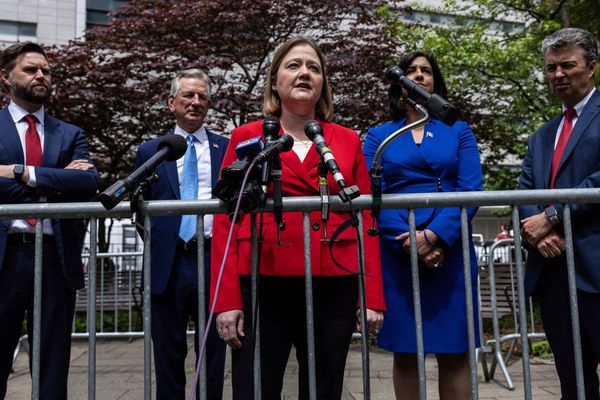Labor unions hit the headlines in late June as worker actions stalled production at aircraft maker Boeing and threatened a delivery stoppage at UPS. The votes to strike stopped short of actual walkouts. But the threats linger, providing leverage for the Teamsters and Machinists unions negotiating contracts.
The news underscored the upswing in unionization efforts riding on the tight labor conditions grown out of the coronavirus pandemic. Starbucks, Amazon.com, Apple and Tesla have all been pressured by the union push. So have Alphabet's Google and Activision-Blizzard, soon to be part of Microsoft if the companies clear antitrust hurdles.
In the entertainment industry, the Writers Guild strike continues. And thousands of hospitality workers walked off the job in Los Angeles over the July 4 holiday weekend after contracts expired at more than 60 hotels. Those included facilities owned by Marriott International and Hilton.
But while strikes and contract negotiations are par for the unionized course, attempts to install unions in previously nonunion companies have grown much more active. The National Labor Relations Board reported a 53% surge in filings for union representation in the fiscal year through last September — to the highest number since 2016. The pace remains brisk in 2023, with filings up 14% for the fiscal year through April.
The labor market may be loosening up, though the signals are mixed. That has both labor and corporate managers watching to see when the trend might ease. Union sentiment so far shows resilience. High costs of housing and other essentials continue to gnaw at workers' paychecks. And the shift to a services-based economy leaves more of the workforce to fend for themselves, with no collective bargaining rights.
Service-Sector Battle Lines
Still, Boeing supplier Spirit AeroSystems' preemptive shutdown of production facilities on June 22 hints that employers may be feeling more confident. Production restarted July 5, after union members approved a new four-year contract.
And the recent pushback against ESG — investing based on environmental, social and governance issues — has given a broader voice to those on Wall Street who see labor unions and investor interests as squarely at odds.
The new union push has been particularly keen in services areas of the economy, rather than the traditional stronghold in manufacturing and transportation. The union drive by Starbucks employees spotlights the new business-labor battle lines.
Starbucks Union Organizing Draws ESG Investing Proponents
A two-year push for Starbucks unionization led shareholders to vote in late March for an independent assessment of the company's labor practices. Pro-union shareholders won the vote with a slim 52% majority. The result came just as former Starbucks CEO Howard Schultz went before the U.S. Senate to address allegations that his company had used anti-union tactics.
Behind the scenes, Boston-based investment firm Trillium Asset Management spearheaded a group of Starbucks institutional investors backing the union push at the $112 billion market capitalization juggernaut. Trillium, which manages a $6 billion portfolio, has been at the forefront of ESG investing for more than four decades.
The Trillium-Starbucks contest is set against the backdrop of rising U.S. unionization efforts, taking place even as the overall union share of the U.S. workforce continues a decadeslong decline. Part of that decline was due to the U.S. economy shifting from manufacturing to services. Another part was the increase in college graduates, who traditionally downplayed the need for unions.
The Trillium-Starbucks contest also highlights the great push-pull politics around ESG investing. After several years of momentum in companies proclaiming ESG goals, ESG investing has run into a backlash.
The result often makes ESG-related matters appear too complex to surmount. But Jonas Kron, Trillium's chief advocacy officer, says the basic argument is simple when it comes to labor unions.
"Companies for years have made a set of commitments regarding labor rights that obligate them to really go beyond simply compliance with U.S. law," Kron told IBD.
"It's important from our point of view that the company lives up to those commitments," he added.
How Many Starbucks Are Unionized?
Trillium is just one of many players working behind the scenes to push large corporations toward unionization.
"What's happening right now is that those commitments are being put to a test by the workers themselves," Kron said.
Since late 2021, workers at more than 280 U.S. Starbucks locations have voted to join Workers United. An affiliate of Service Employees International, Workers United says it represents 86,000 workers spread across the apparel, textile, commercial laundry, distribution, food service, hospitality, fitness and nonprofit industries.
SEIU represents nearly 1.9 million workers in the U.S. and Canada. Unite Here, the union tied to the hospitality strike in Los Angeles, says it represents about 300,000.
ESG Investing: Trillium Backs Starbucks Unionizing
Starbucks management has resisted each of these collective bargaining drives. In his March testimony, Schultz told the U.S. Senate that Starbucks already offers paid sick leave, parental leave, a minimum starting salary of $15 per hour and other benefits. Starbucks did not respond to a request for comment from IBD.
"Starbucks respects the right of all partners to make their own decisions about union representation," Schultz said. The company "is committed to engaging in good faith collective bargaining for each store that has a union," he said.
He claimed in March that Starbucks arranged more than 200 sets of negotiations, each relating to individual stores. Schultz, however, also claims union representatives complicated the process by demanding multistore talks, delaying or refusing to attend meetings and insisting on preconditions, such as "virtual" bargaining and participation by outside observers.
Trillium says it has been urging Starbucks to forge a union agreement with employees since December 2021. The investment firm used a similar playbook at Apple, in which Trillium has a modest stake of around a $150 million.
In 2022, two of Apple's 272 retail stores voted to unionize. It wasn't clear how many of the company's 164,000 employees worked at those stores.
Trillium says it proffered a proposal for Apple's board to increase oversight of its handling of labor union campaigns. The firm withdrew the document after Apple agreed to conduct a third-party assessment of its dealings with unionizing workers.
Trillium has shareholder proposals for paid sick leave pending at Union Pacific and CVS Health.
Are Labor Unions Declining?
Publicly traded companies aren't the only targets of labor unions. Workers have pushed for union contracts at Trader Joe's, which is privately owned, and REI, a member-owned co-op.
Despite the uptick in union efforts, union members fell to 10.1% of U.S. wage and salary workers in 2022, Bureau of Labor Statistics data show. That share, which excludes self-employed workers, is the lowest since the BLS began tracking the numbers in 1983.
At that point, union workers made up 20% of the labor force. That number was already well off what the Congressional Research Service noted as the peak of around 35% in 1954, although methodologies may have differed.
In pure numbers, union members peaked in 1979 at an estimated 21 million. The current situation is more like a "wave of media attention" than an actual unionization surge, says Suresh Naidu, an economist at Columbia University.
The overall structural picture "is still trending downward, but there have been a lot more new efforts happening in the last couple of years than in the previous 15 years," Naidu said.
Public Opinion On Labor Unions
Public sentiment over organized labor also seems to be changing. In August 2022, a Gallup poll found that 71% of Americans approved of labor unions. That's the highest level since 1965.
A 2022 Pew Research Survey found that most U.S. adults believed the decadeslong decrease in union membership "has been somewhat or very bad for the country."
So it might not be surprising that 2,510 union representation petitions were filed with the National Labor Relations Board in the year ended last September, up from 1,638 petitions the year before.
Labor Unions: Pros, Cons And Trillium's View
Union pensions and other benefits have long been seen as negatives by U.S. corporate management and many investors. They lard balance sheets with heavy obligations to retired workforces.
But for Kron and Trillium, a union workforce gives a company added value. In building its portfolio, Trillium looks at how a business deals with "human capital management." Kron says this includes unionization, health and safety, and diversity, equity and inclusion (DEI) efforts.
"Those are issues that are part of the mosaic of information that we're looking at in the investment process," Kron said.
In many cases, these ESG investing issues have become venomous. At least some investors see them as cues that management is distracted from a focus on profit. In the political sphere, some see signals that management is skewing to the left.
Executives contend they are trying to keep employees happy in an extremely tight labor market. They may also argue that research favors a stronger stance on ESG and DEI policies.
In 2022, Trillium authored a study laying out its case why investors should support labor unions. Firms with union workers see greater productivity, health and safety, satisfaction and turnover among employees, according to the Trillium report.
Impact Of Labor Unions: UPS vs. FedEx
The asset manager uses United Parcel Service and FedEx as an example. UPS is unionized. FedEx is largely nonunion.
FedEx deals only with the Air Line Pilots Association, which represents FedEx Express pilots. UPS, on the other hand, is the largest single employer of Teamsters union members.
Trillium says the UPS collective bargaining contract guarantees annual pay increases for its drivers, which it sees as a key differentiator between the company and rivals FedEx and Amazon. Trillium's analysis also claims the labor contract allowed UPS to weather the Covid pandemic more effectively than its competition.
Company Profits Tied To Membership In Labor Unions?
As proof, Trillium points to the 50% year-over-year operating profit increase reported by UPS in 2021. UPS also raised projections for full-year results, with CEO Carol Tome remaining optimistic that the company's ability to navigate the tight labor market was strong.
Twenty-Year Stock Performance
| Company | Stock ticker | Percent change* |
|---|---|---|
| Amazon | AMZN | 7,078 |
| Starbucks | SBUX | 1,514 |
| FedEx | FDX | 300 |
| UPS | UPS | 181 |
| S&P 500 | 357 |
*Price change from June 30, 2003 to June 30, 2023
FactSet puts Amazon's overall operating profit for 2021 at $24.87 billion, up not quite 9%. FedEx operating profit soared 98% in 2021, to $6.18 billion, FactSet says.
In terms of earnings growth, FedEx was the big winner. FedEx diluted earnings soared 193% between 2019 and 2022. UPS earnings popped 158% over the same three years. It was a period of gyrations for Amazon earnings. EPS were $1.15 per share in 2019, but the company lost 27 cents a share in 2022.
But at least for that brief period, UPS investors came out ahead. All three companies rode stock price ups and downs for those years. But UPS shares exited 2022 with a three-year gain of 48.5%, compared to a 14.5% advance for FedEx and 9.1% drop at Amazon.
"We're invested in UPS, not FedEx. UPS is a heavily unionized workforce," Kron said. "In many ways, they're pretty much the same business, but that's a key differentiator between the two."
Over a longer period, UPS and FedEx have both underperformed the S&P 500 for the past two decades. Amazon, on the other hand, has a strong track record of outperforming the index.
The Broader Union Membership Effect
UPS and FedEx are one limited example of the impact of labor unions. In the larger picture, Sanjai Bhagat, professor of finance at the University of Colorado, told IBD that research shows investor returns are significantly more negative for funds that focus on ESG investing.
"The evidence suggests strongly that investor returns have been significantly negative for funds that focus on ESG issues," Bhagat said.
He says companies that unionize could lose 5%-10% of shareholder value. The contention is that capital shifts from investors to workers, giving workers a larger stake in the company.
Bhagat also cites strategic costs of having union workers.
"A company cannot be as flexible once it is unionized," Bhagat said. "The cost of equity capital goes up and that will explain the drop in the share price."
Amazon Union Activity
In April 2022, Morgan Stanley analyst Brian Nowak wrote that for every 1% of Amazon's front-line workforce that unionizes, the company would take on around $150 million in additional annual operating expenses. The analyst note came in relation to the April 2022 vote by Amazon warehouse workers in New York to unionize.
"The larger trend to monitor is whether we will see any contagion or louder unionization fervor," Nowak wrote. He added that negotiations between management and Amazon union workers could take years.
Amazon union battles have continued, with Teamsters union workers walking out of a warehouse in Palmdale, Calif., on June 15. Also in June, Vermont Sen. Bernie Sanders launched a health, education, labor and pension committee investigation into working conditions in Amazon's warehouses.
Nowak noted that if union efforts spread rapidly, Amazon could step up investment in robots and other automation at its warehouses.
Since the Starbucks union wave began in December 2021, Starbucks shares have fallen around 15%. Meanwhile, Amazon shares dumped 30% in the four weeks following the April 1, 2022 vote to unionize a warehouse in New York. The stock has since pared those losses to about 22%.
Apple's stock price has leapt about 40% since the first of two retail stores voted to unionize in June 2022.
Other than immediate reactions, such as Amazon's dive after the April 2022 union vote, Naidu says it is difficult to determine how much of the performance of large stocks might relate to union drives, versus the myriad other factors influencing the stock price.
Covid Changed Landscape For Labor Unions
The ongoing union drives at Starbucks have thrust labor rights back into the public eye. And while they don't necessarily signal a resurgence of U.S. union participation, there are important "new" aspects to the effort.
"These are workers that the traditional labor movement has always assumed would never be able to be organized. They are service workers, in these small stores where they have personal relationships with managers," Ileen DeVault, a professor of labor history at Cornell University, said in an interview.
Labor experts say several factors define the union membership movement. First, the workers who unionize now are more likely than in past decades to have a college education. Unions have historically represented workers with lower levels of education. Labor experts generally contend that the more workers get paid, the less likely they are to push to join a union.
But recent economic downturns and the growing number of people getting access to higher education have changed this dynamic. A college education is less likely than in the past to command high wages without collective bargaining, according to labor researchers.
Do Labor Unions Ramp Up With Economy?
Another factor behind labor unions' push: the drive to unionize "usually increases during periods of economic highs and strong demand for labor," said Nelson Lichtenstein, a history professor at the University of California, Santa Barbara.
"Pro-union sentiment declines during economic downturns," Lichtenstein said.
Naidu adds that hot job markets diffuse an employer's power over workers.
"The threats that employers normally use to deter union organizing are just much less effective in this post-Covid period," Naidu said.
DeVault adds that many workers may feel left behind as companies see profits boom.
"How would you feel if your company is making billions of dollars, and you're still making $7.25 or $15 per hour," DeVault said. "That's a pretty easy argument to make to a group of workers."
Please follow Kit Norton on Twitter @KitNorton for more coverage.







